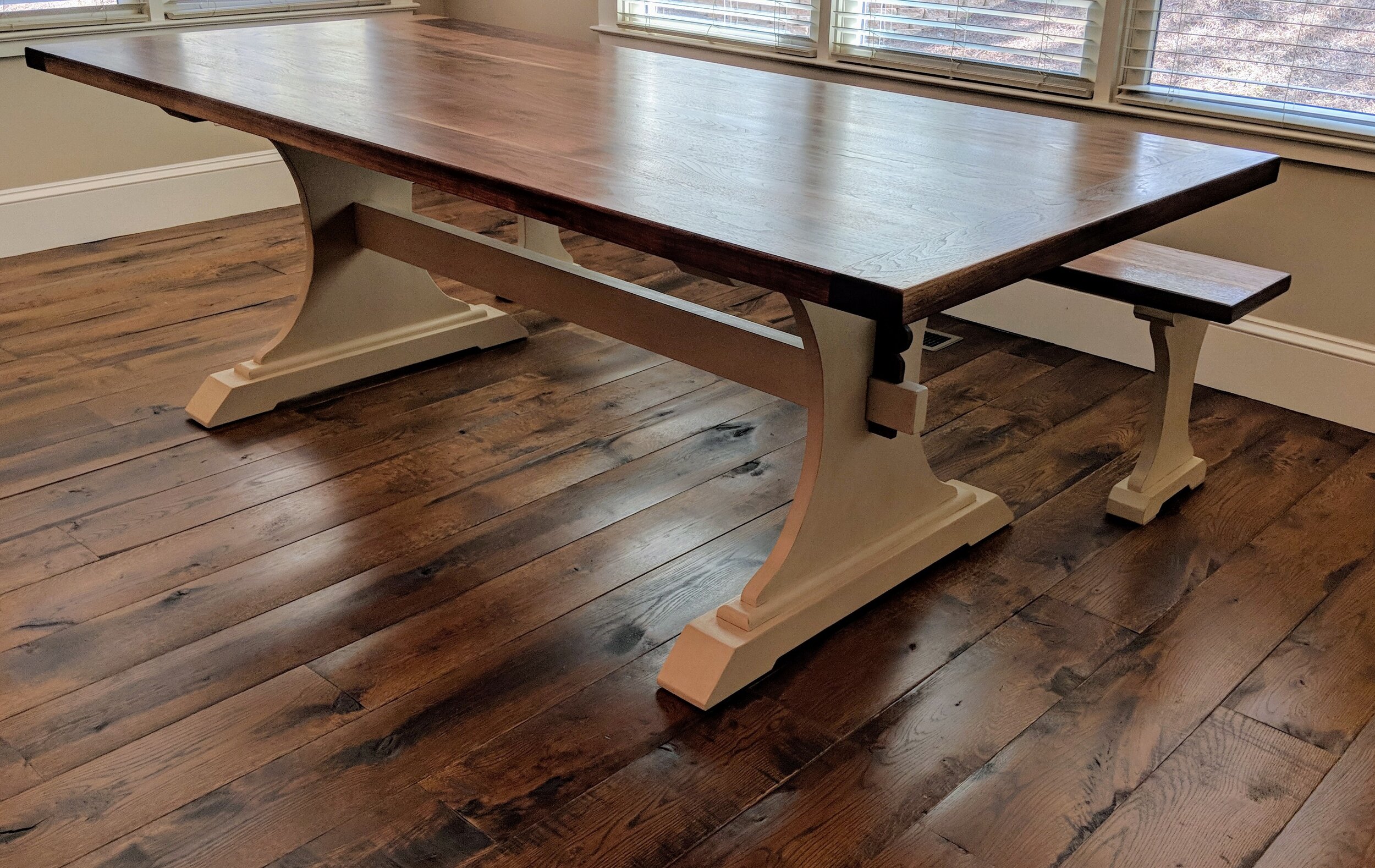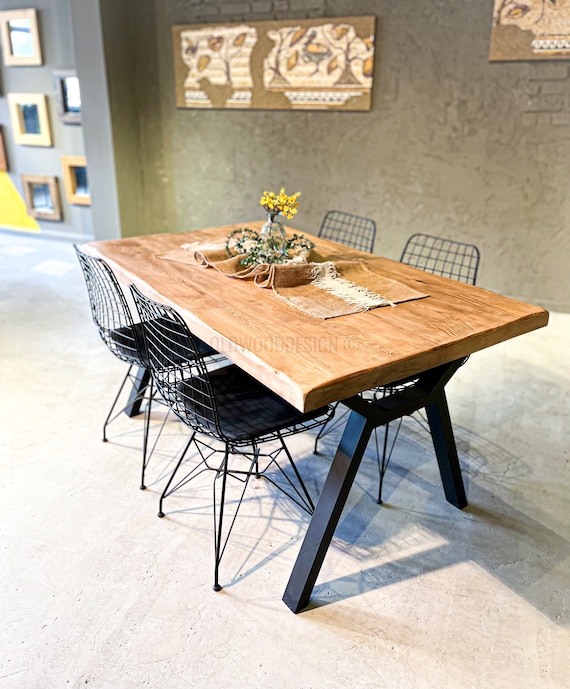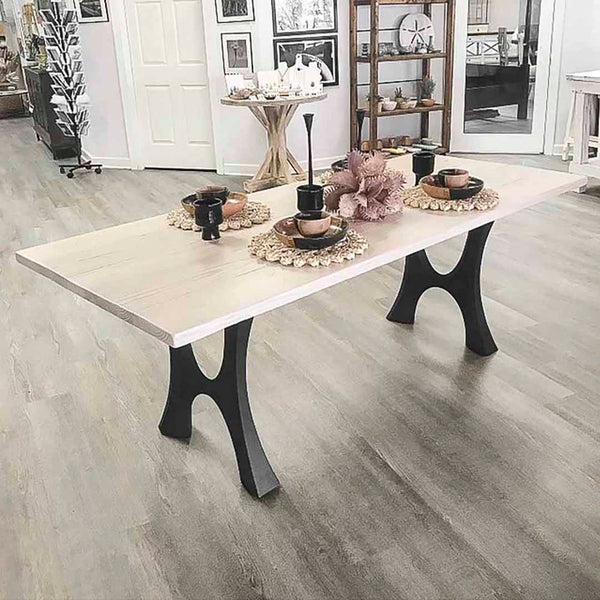Discovering the Different Sorts Of Table Legs Wood for Your Eating Area
The option of eating table legs wood can greatly influence both the visual and useful top qualities of your dining space. Solid wood alternatives, such as oak and walnut, supply a timeless appearance with unequaled longevity, while engineered wood alternatives use cutting-edge layouts that resemble the splendor of natural grains. Additionally, the expanding fad of reclaimed wood introduces a lasting element that charms to environmentally conscious consumers. As we discover these different alternatives, it ends up being vital to consider not just the aesthetic allure however likewise the useful ramifications of each product option. What elements should lead your choice?
Solid Wood Options

Moreover, strong timber is renowned for its stamina and longevity. Unlike engineered products, solid wood is less prone to bending and damages with time when effectively kept. This makes it an excellent option for family members or those who often organize events. Each item of solid timber is one-of-a-kind, showcasing private characteristics that add to the appeal and character of the table.
Furthermore, solid wood can be completed in many methods, ranging from natural oils to tarnished coatings, enabling homeowners to individualize their furnishings to match their decoration. In summary, selecting strong timber for dining table legs not only ensures architectural honesty however also boosts the aesthetic appeal of the eating location, making it a beneficial investment for any kind of home.
Engineered Timber Alternatives

Plywood, constructed from numerous layers of wood veneer, is steady and particularly solid, making it an exceptional choice for eating table legs. Its layered make-up enables it to endure changes in moisture and temperature level much better than conventional strong wood. MDF, on the other hand, uses a smooth surface for paint or veneering, allowing developers to achieve a sleek look while maintaining structural honesty.
When picking crafted timber alternatives, it is necessary to take into consideration the desired use and desired aesthetic. These materials not only enhance the performance of dining areas yet additionally permit for greater design adaptability, making certain that contemporary and traditional styles can coexist harmoniously.
Reclaimed Wood Features
Reclaimed wood offers a distinct blend of sustainability and character, making it an increasingly popular choice for dining table legs. Sourced from old barns, manufacturing facilities, and other structures, redeemed timber symbolizes a history that brand-new products just can not duplicate. Each item brings its own story, marked by distinctive blemishes, knots, and varying grain patterns, which add to a table's unique visual appeal.
Along with its aesthetic beauty, reclaimed wood is an environmentally pleasant choice. By repurposing previously used products, it minimizes the need for new lumber, thus aiding to conserve woodlands and lessen waste. This lines up with a growing customer preference for sustainable techniques in furniture.
Additionally, reclaimed wood is usually a lot more resilient than freshly collected wood due to its age. The all-natural drying procedure that reclaimed timber undergoes cause a denser and stronger product, making it less susceptible to bending and splitting. This enhances the long life of eating tables, enabling them to hold up against the rigors of everyday use.
Softwood vs. Hardwood
When picking eating table legs, recognizing the differences between softwood and wood is essential for attaining both aesthetic and useful goals. Softwoods, derived from coniferous trees, such as want and cedar, are characterized by their lighter weight and simplicity of manipulation. They normally display an even more rustic appearance, making them ideal for casual or country-style eating spaces. Nevertheless, softwoods are usually much less resilient than woods, which can be a consideration for family members or those seeking durability in their furnishings.
On the various other hand, hardwoods, sourced from deciduous trees like oak, maple, and cherry, are renowned for their thickness, toughness, and durability. The intricate grain patterns and abundant tones of woods supply a innovative and ageless appeal, making them ideal for official dining setups. While woods tend to be much more expensive and much heavier, their durability versus wear and other tear frequently validates the investment.
Ultimately, the option between softwood and wood for dining table legs ought to align with your layout vision, use needs, and budget plan, making sure that your dining area reflects your individual style while remaining functional with time.

Surfaces and Treatments
The aesthetic appeal and longevity of eating table legs can be considerably improved with numerous coatings and therapies. These processes not only secure the timber from damages however likewise boost its look, enabling it to complement varied interior styles.
One common therapy is staining, which passes through the timber and improves its natural grain while adding shade. Spots provide an abundant, sophisticated look, enabling homeowners to match their Bonuses furnishings with existing style. Conversely, clear surfaces such as polyurethane or varnish create a safety layer without changing the timber's initial shade, ensuring longevity versus deterioration.
Additionally, natural oils, like tung or linseed oil, nourish the timber and provide a subtle sheen, all while being eco-friendly. These oils permit the surface to breathe, preventing dampness buildup and possible warping.
For those looking for a Continued rustic appeal, weather-beaten or distressed finishes can be put on create an aged appearance, adding personality to the item. Eventually, the selection of treatments and coatings depends on individual preference, preferred visual appeals, and the certain wood kind, making it important to think about these elements when picking table legs for your area.
Verdict
To conclude, the selection of dining table leg materials substantially influences both the visual and useful elements of a dining room. Solid woods, crafted choices, and recovered alternatives each deal distinctive advantages, accommodating numerous preferences and demands. Understanding the differences in between hardwoods and softwoods, in addition to suitable coatings and treatments, enables educated decision-making. Inevitably, the choice of timber kind need to line up with wanted design, sturdiness, and ecological considerations, improving the general eating experience.
The selection of eating table legs timber can greatly impact both the useful and aesthetic high qualities of your dining space - Dining Table Legs Wood. Solid timber options, such as oak and walnut, provide a traditional look with unmatched longevity, while crafted wood options offer ingenious styles that resemble the splendor of all-natural grains. Solid wood provides an ageless high quality that can boost the total style of a dining space. Each item of strong wood is unique, showcasing individual attributes that add to the charm and personality of the dining table
In addition, recovered wood is frequently more sturdy than recently harvested timber due to its age.